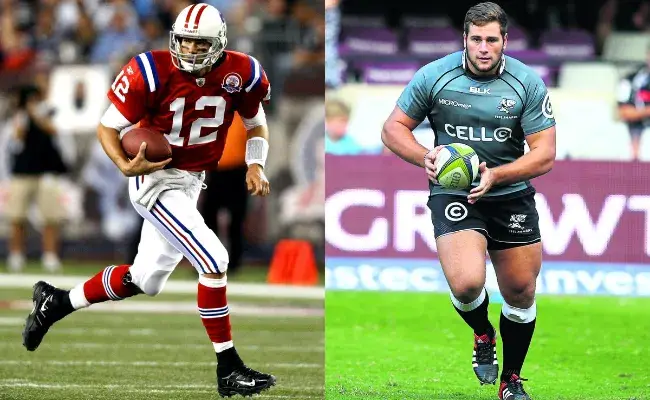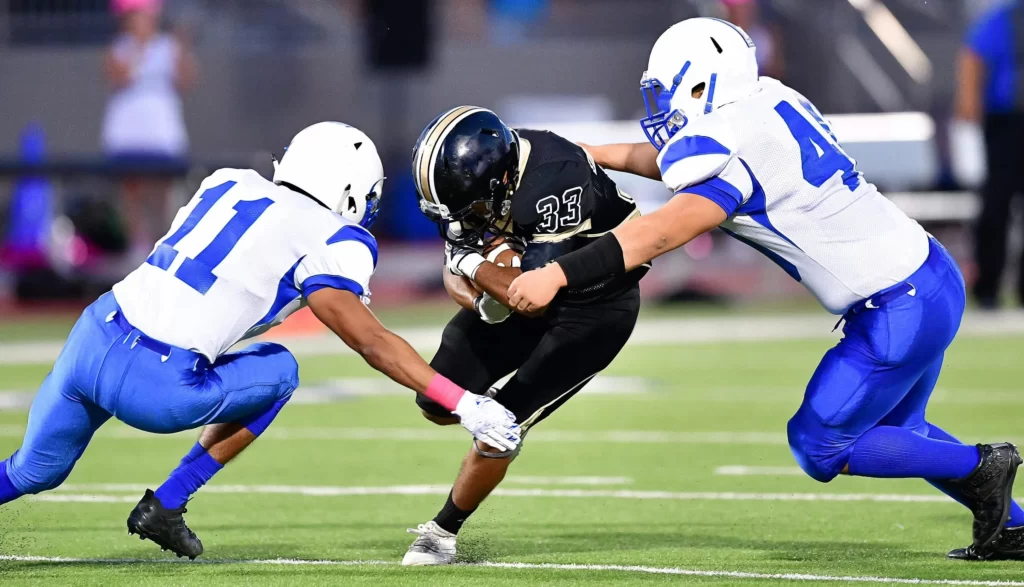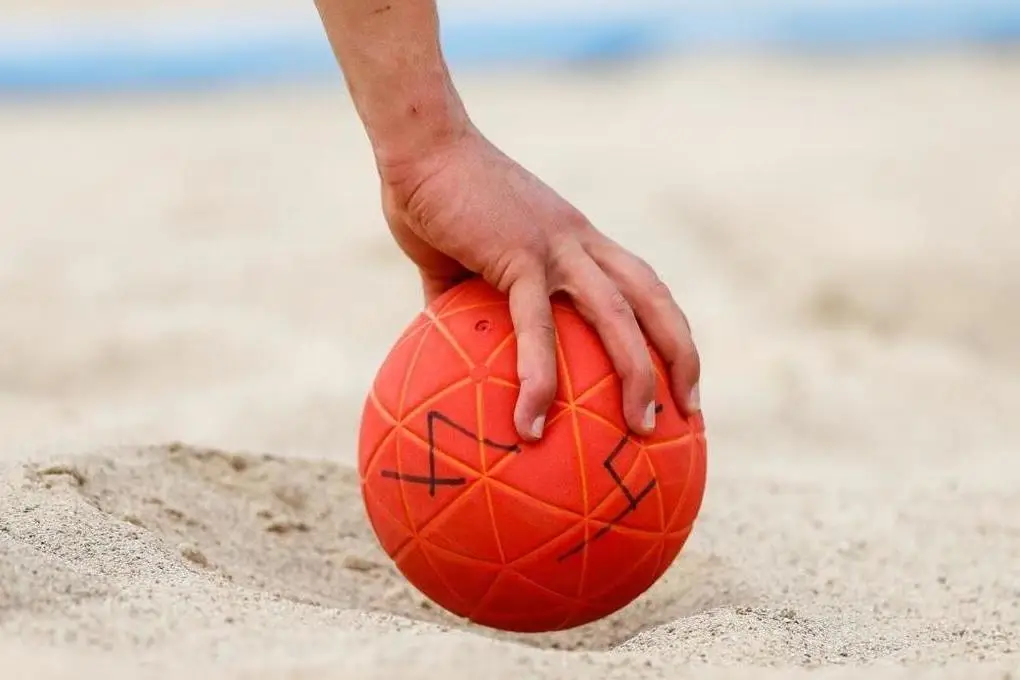Faced with two vibrant and dynamic sports, many people wonder what is the difference between handball and rugby? At first glance, both seem to be about the ball, teamwork and the struggle to win, but in fact there are many key differences between them.
Handball and rugby: the key differences
The rules are so different that it is impossible to confuse them even with a superficial familiarisation. In handball, there are two teams of seven players, including the goalkeeper. The aim is to throw the ball into the opponent’s goal, and it can be passed with the hands, but it is forbidden to hold it for longer than three seconds or to take more than three steps without passing it. The match consists of two halves of 30 minutes each, making the process fast and requiring instant reaction.
In rugby, on the other hand, two teams of 15 players take the field and the match lasts 80 minutes: two halves of 40. The main goal is to get the ball into the opponent’s in-goal or to score a goal using your foot. Unlike handball, the ball in rugby is oval, which makes it unpredictable in movement, and fighting for it: a real challenge for the athletes’ physical fitness. Scrums, runs and powerful tackles distinguish rugby from handball and make the encounters particularly entertaining.
What is the difference between handball and rugby?
The main differences lie in the shape of the ball, the way you interact with it, the equipment and the characteristics of the game. Handball uses a small, round ball with a diameter of about 58-60 cm for men’s teams and 54-56 cm for women’s teams. It is easy to hold with one hand, which is important for quick throws and passes.
In rugby, the ball is oval, approximately 28-30cm long and 58-62cm wide. The oval shape makes the task much more difficult, as the ball behaves unpredictably when dropped, requiring athletes to be quick to react and orientate themselves in the situation. A rugby pitch is an open field, usually with a grass surface, measuring 100 by 70 metres. A handball court is much smaller, 40 by 20 metres, and is indoors.
The main differences are in the equipment:
- Handball uses special rubber shoes for better traction on the floor. These shoes have non-slip soles and provide maximum control of movement, which is especially important for quick turns and jumps.
- In rugby, players often wear protective helmets and face shields to avoid injury. Helmets are usually made of soft polyurethane foam to protect the head from impact but not restrict vision. Shields are made of lightweight composite materials to protect the shins and shoulders without restricting mobility.
- A handball pitch is an indoor field, while a rugby pitch is an outdoor stadium with a grass surface. The surface in handball is usually synthetic, which reduces the risk of injury in a fall, whereas in rugby it is important to have a natural grass surface for softer falls and better traction with cleated shoes.
Comparing handball and rugby: what are the main features?
 When it comes to technique, the difference between handball and rugby is immediately clear. In handball, the decisive factors are manual dexterity, co-ordination and accuracy. Athletes must not only move quickly around the court, but also work together effectively to throw the ball into the opponent’s goal. Each shot requires precise co-ordination and each pass requires instant judgement.
When it comes to technique, the difference between handball and rugby is immediately clear. In handball, the decisive factors are manual dexterity, co-ordination and accuracy. Athletes must not only move quickly around the court, but also work together effectively to throw the ball into the opponent’s goal. Each shot requires precise co-ordination and each pass requires instant judgement.
Rugby is all about strength and physical endurance. Players must break through the opponent’s defence, break through powerful defences with the ball, and stay in the game until the end of the match. It’s not just physical skills that are important here, but also tactical thinking: the athlete must understand when it’s better to run with the ball and when it’s better to make a pass.
Key indicators:
- In handball, the main emphasis is on co-ordination of movement and accuracy of throws. The average throwing speed in handball can be up to 100 km/h and players must be able to direct the ball accurately despite the active resistance of the defenders.
- In rugby, physical strength and the ability to defend the ball are important. The average rugby player weighs around 100-120kg and these physical attributes help to successfully tackle and defend the ball during play.
- Manual dexterity is critical in handball and shoulder and leg strength is critical in rugby. In handball, players must switch quickly between attack and defence, making an average of 60 passes per match. In rugby, balance is important when making contact with an opponent, while leg strength helps to accelerate and move forward efficiently.
What handball and rugby have in common
Although at first glance these sports are quite different, there are many similarities between them. Firstly, success depends directly on teamwork. In both sports, you need to be able to react quickly to your opponents’ actions and communicate clearly with your teammates.
Secondly, tactics and strategy play an important role. Athletes must be able to anticipate their opponents’ actions and plan their moves several steps ahead. Both games require high concentration and the ability to make quick decisions in stressful situations.
Elements of teamwork:
- In rugby, a “tight defence” strategy is often used, where athletes group together to create a strong barrier for the opponent. In handball, the “wall” tactic is common, where several people form a barrier protecting the goal.
- Training is aimed at developing synchronised movements of all team members. In handball, synchronisation of quick passes is popular, while in rugby, maul and ruck drills are popular, where athletes work as a unit to move the ball forward.
- Communication: the key to a successful game. In rugby, the team captain is often responsible for coordination and decision-making on the field, using special signals to communicate information. In handball, the captain also plays an important role, especially when organising attacking and defending.
Handball vs. rugby: which to choose?
Handball is suitable for those who like speed, agility and tactical techniques. This game develops reaction, improves coordination and teaches you to throw accurately. It is accessible to both children and adults due to the comparatively less stress on the body.
Rugby, on the other hand, is ideal for those who want to test their strength and endurance. It is important to be able to withstand physical pressure, not to be afraid of collisions and to be able to move quickly with the ball, even when the opposing defenders are in front of you. The sport is about character, about fighting until the last metre of the field, and this is what attracts many athletes.
Interesting to know:
- Handball was first included in the Olympic Games programme in 1972 and the discipline has developed rapidly ever since.
- One of the most famous matches in rugby history: the 1995 World Cup final when South Africa defeated New Zealand, symbolising the unification of a nation after apartheid.
- Handball and rugby are both among the sports disciplines recognised by the International Olympic Committee and provide an excellent base for building endurance and strength.
Conclusion
 What is the difference between handball and rugby? These two sports offer completely different challenges and opportunities. No matter which you choose, the main thing is to enjoy the process, have fun playing and strive for new victories.
What is the difference between handball and rugby? These two sports offer completely different challenges and opportunities. No matter which you choose, the main thing is to enjoy the process, have fun playing and strive for new victories.
 en
en  ru
ru  de
de  ar
ar  es
es  nl
nl  hi
hi  fr
fr  it
it  pt
pt  el
el 










